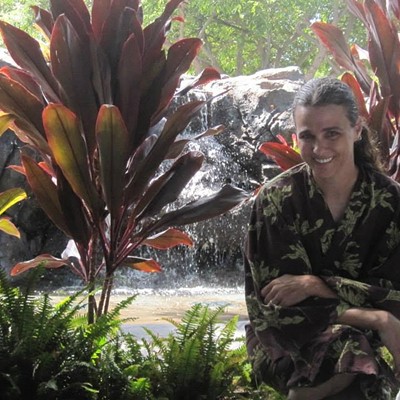First, there was spice (a.k.a. "synthetic marijuana"). Then came "bath salts" that reportedly had the same effects as crystal meth when snorted.
Now, another designer drug has hit the market -- and reportedly resulted in a fatality last week.
It's a synthetic hallucinogen called 2C-E, also known as "Europa," and it reportedly has the same effects as LSD and psychedelic mushrooms. It's available for sale on the Internet, and seems popular among the under-21 raver crowd.
There's been one reported case of an overdose of 2C-E in Phoenix, but other states have seen a larger number of incidents.
The death has put 2C-E in the current spotlight, but the substance was actually developed more than 30 years ago -- with permission from the United States Drug Enforcement Agency.
The drug was developed by California psychopharmacologist Alexander Shulgin in the 1970s. At the time, Shulgin had a license from the DEA to produce synthetic drugs in his laboratory in order to analyze drugs and provide testimony for prosecutions.
What Shulgin did instead was become an enthusiast; after publishing a book about synthetics called PhiHKAL: A Chemical Love Story, he lost his DEA license.
In his book, Shulgin describes the effects of 16 mg of 2C-E: "There was a strange devil-angel pairing. As I was being told of the ecstatic white-light ascent of my partner into the God-space of an out-of-body experience, I was fighting my way out of a brown ooze."
Other reported effects of 2C-E aren't quite as ecstatic. Police in Minnesota told media that the victims last week were having difficulty breathing, and some appeared to be hallucinating.
The Arizona Poison and Drug Information Center reports receiving one call related to 2C-E -- in this case, a 19 year-old male was treated in an emergency room in January of this year after reportedly snorting the drug. He was experiencing an increased heart rate, chest pain, agitation, and hallucinations.
Like the synthetics in spice and bath salts when they first hit the market, the 2C-E (or "Europa") compound is not yet a controlled substance in the U.S. Synthetics with similar chemical structures, such as 2C-I and 2C-T-7, are also currently legal stateside.
However, a related substance called 2C-B (also developed by Shulgin in the '70s), is a Schedule I Controlled Substance in the U.S. The chemical structure of 2C-E differs from 2C-B by only one element (E bonds an ethyl group with hydrogen, whereas B uses Bromine). Any drugs with similar chemical structure to 2C-B could be prosecuted under the Federal Analogue Act (an analogue is a substance similar to another substance, but usually differs by a single element or variation).
Considering how quickly the DEA moved to ban the synthetic compounds in spice, they may move even faster to controll 2C-E -- especially now that it's been pinned to a death in the Midwest.











